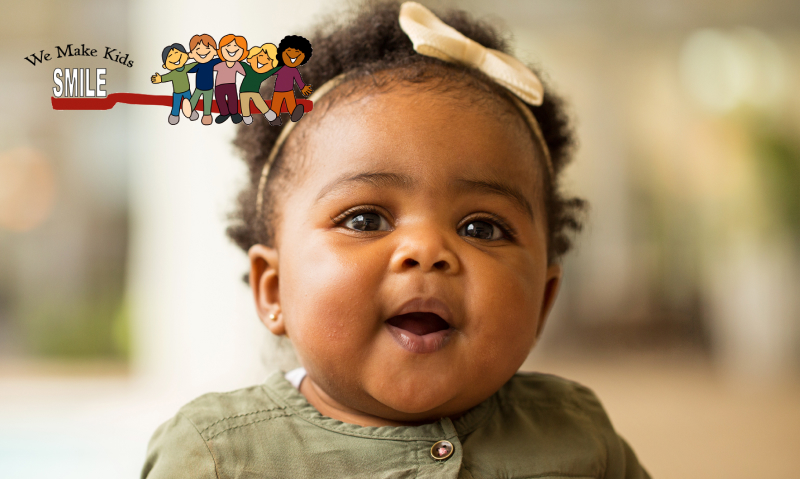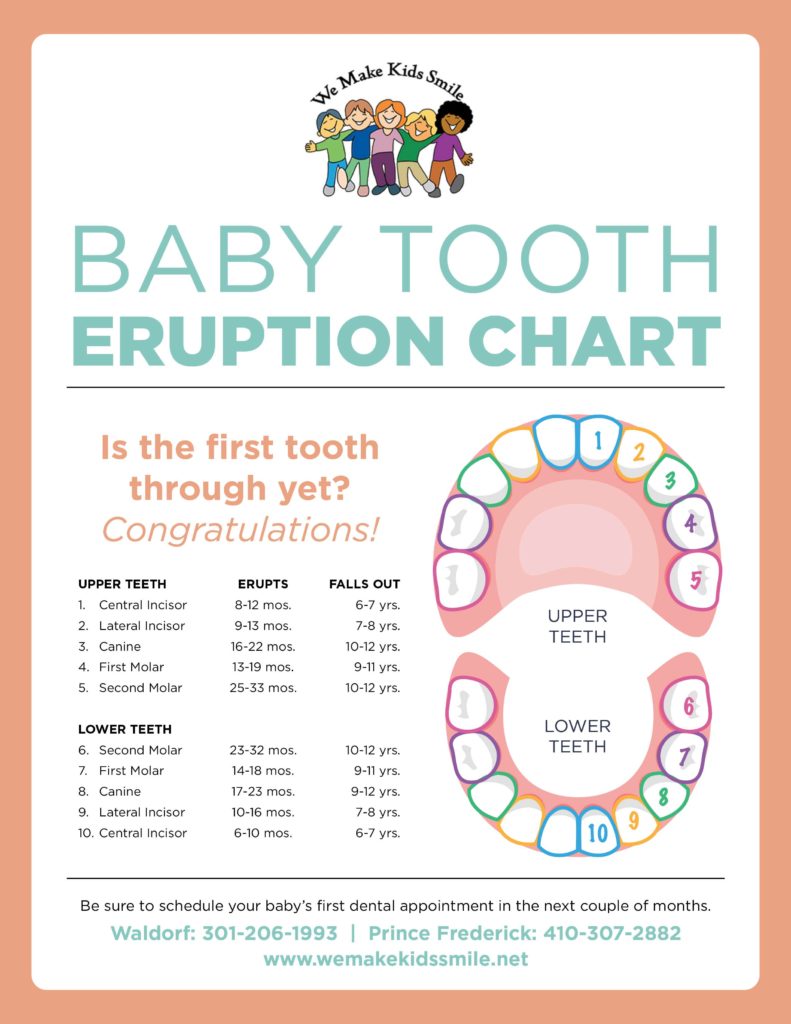Help your child develop strong, healthy teeth.
Your baby’s gummy smile and handful of baby teeth don’t just look adorable. Their baby teeth also play an essential role in your child’s oral and overall health, helping them to eat, speak, and eventually guiding their adult teeth into the right spot in their mouth. Ensuring that your baby’s oral health gets off to the right start is an essential part of protecting their long-term health, so it’s important to know what to expect as your child begins teething—especially since the thinner layer of protective enamel on baby teeth makes them more vulnerable to decay than adult teeth. To help you take the best possible care of your little one, we’ve answered 10 common questions about the teething process and early oral hygiene.
1. What are the symptoms of teething?
Teething comes with a range of symptoms that vary in severity based on the individual child; some children are very uncomfortable when they first start teething, while others hardly seem to notice it. Despite this, you’ll likely notice at least a few of these common symptoms:
- Excessive drooling
- Chewing or gnawing on hard objects
- Decreased appetite
- Wanting to nurse more often
- Disturbed sleeping patterns
- A slightly raised temperature (but not a fever)
- Red and swollen gums
- Tender gums
2. What can I do about teething discomfort?
There are several ways you can help relieve the discomfort that teething can cause your child. Light pressure on your little one’s gums can actually help them feel better—this is why teething babies tend to chew on hard objects so much. Letting your child chew on a cool, damp washcloth or sticking a teething ring in the freezer for a few minutes to get it cool can help your baby’s gums feel a lot better while ensuring they’re chewing on something safe.
Avoid teething necklaces or only allow your child to use them with direct supervision, as they can be a choking or strangling hazard. You can also gently massage your child’s gums with clean fingers or a damp piece of gauze. If your child seems particularly uncomfortable, you can talk to your pediatrician about using a safe dose of baby Tylenol or a similar type of over-the-counter pain medication designed for infants.
3. Does my baby have a fever just because of teething?
While it’s normal for teething to cause a slight rise in your baby’s body temperature, it shouldn’t cause your baby to develop a true fever. If your baby has a temperature of 101°F or higher, you should call your pediatrician immediately, as they may have an infection or virus.
4. When will my baby start teething?
Although every child develops at a slightly different rate, your little one should start teething at around 6to 10 months old. Due to factors like genetics or nutrition, some babies begin teething much earlier than this while others teeth later, so don’t be too concerned if your child doesn’t start teething at exactly 6 months.
5. Which teeth come in first?
The lower incisors, or lower front teeth, are usually the first teeth to erupt, appearing when your child is between 6 and 10 months old. As you can see on our baby teething chart, the front incisors usually erupt at 8 to 12 months, so some children actually begin getting their upper front teeth first. If you’d like to learn more about the order you can expect your child’s teeth to come in, including when they’ll be getting their first molars, you can check out the baby teeth chart we’ve made for you!
6. Can I continue breastfeeding after my baby starts teething?
The world’s major health organizations, including the World Health Organization, agree that it’s best to breastfeed your child for at least a year whenever possible, though you should slowly introduce solid foods at around 6 months. While breastfeeding during the teething process does carry a few challenges, it’s certainly possible to continue breastfeeding your little one while they’re teething.
If you’re worried that your baby will bite down on your nipple during their feeding, there are several ways you can reduce this likelihood. You can give your baby something to chew on before and after feedings, massage their gums right before feedings, or change breastfeeding positions. If they do bite down, pulling them away and saying, “Ow!” usually teaches them that they shouldn’t. On the other hand, if you’re having trouble getting your teething baby to breastfeed, you can try pumping your breast milk and giving it to them in a bottle or cup; this will keep up your supply of milk and it might be more comfortable for your baby.
7. When will my baby stop teething?
Most children finish teething by the time they’re 3 years old, but once again, every child is different. Their last pair of molars can come in between the ages of 23 and 31 months, so your child could finish teething as early as 2 years old.
8. How many teeth will my baby have?
When your baby is done teething, they’ll have a total of 20 baby teeth—fewer teeth than an adult has, but the perfect number to fit in their small jaws. These teeth include eight molars, four canine teeth, four lateral incisors, and four central incisors.
9. How do I care for my baby’s new teeth?
You should start brushing your baby’s teeth twice a day with a rice-sized dab of fluoridated toothpaste and a soft-bristled baby toothbrush as soon as their first tooth erupts. Even before this, you should wipe their gums down with a wet washcloth or gauze once or twice a day, as this gets them used to the routine early on and keeps plaque from building up on their gums and attacking their teeth as they begin to erupt. You should also start flossing your child’s teeth as soon as they have two teeth close enough together to floss between, since flossing is the only way to clean the sides of their teeth and remove plaque from the gum line.
10. Why is it so important to take my child to see the dentist so soon?
Ideally, your child should go to their first dental appointment as soon as possible after their first tooth erupts, but no later than a year old. When you’re Googling “pediatric dentist near me” in an attempt to find your child the best possible dentist, you might wonder why they really need to see the dentist when they still have so few teeth. The answer is that baby teeth are much more vulnerable to decay than adult teeth are, as their thin layer of enamel means that decay can take hold and spread faster.
Your child’s dentist will also take the opportunity to ensure your baby’s teeth are developing normally, check that they’re getting enough fluoride, and can answer any of your questions about your child’s oral health or give you advice about how to care for their teeth at home. Even seemingly simple advice can make a huge difference in your child’s oral health or help their routine become easier or more enjoyable.
Your child’s teeth and jaws change a lot in just a few years, but you don’t have to face these changes or new challenges alone. If you have any questions about our baby teething chart, how to handle the teething process, or the best ways to care for their oral hygiene, feel free to call our office at any time. Together, we can ensure that your little one’s teeth come in—and stay—strong and healthy.

